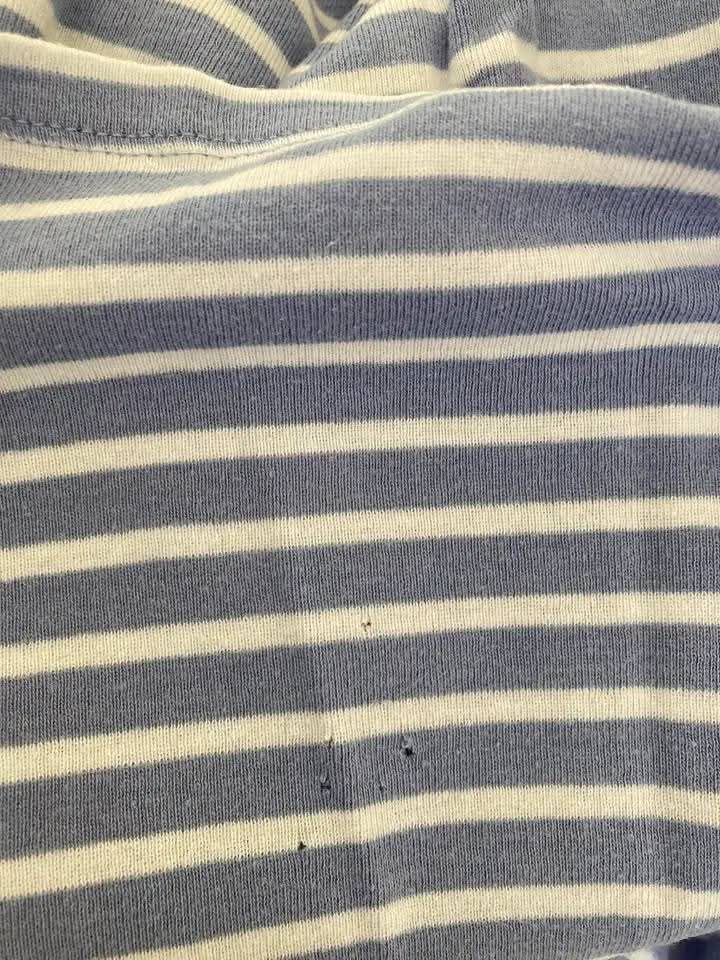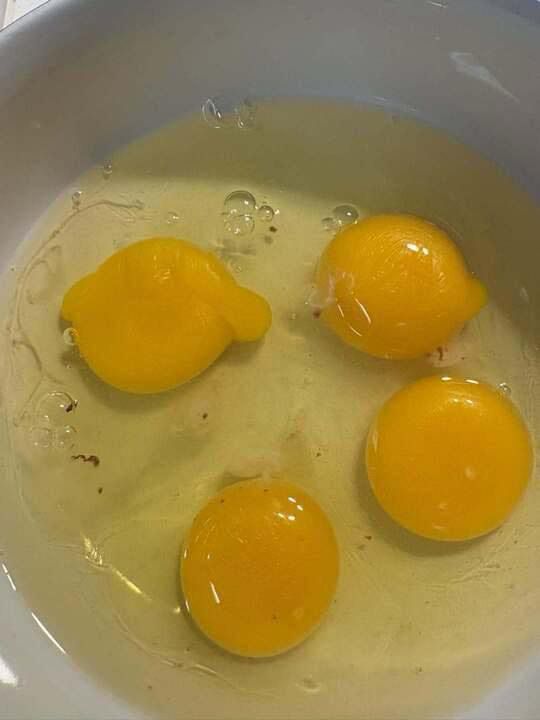We’ve all been there—horror-stricken after discovering tiny, mysterious holes appearing on our clothes, often in areas like the waistband, the sleeves, or the lower hem. It’s incredibly frustrating when this happens, especially when you don’t wear belts or use a washing machine in a way that could cause damage. So, what is causing these little holes? If the usual suspects—belts, washing machines, and mishandling—don’t apply to your situation, then you’re left wondering if you need to replace your clothes or if there’s something else at play. The truth is, multiple factors can lead to the formation of holes in your clothing, ranging from natural wear and tear to environmental and biological factors. Let’s dive deep into some possible causes.
1. Moths: The Silent Culprits
One of the most common—and often overlooked—reasons for holes in clothing is the damage caused by moths, particularly moth larvae. These tiny, seemingly harmless creatures can cause significant damage to fabrics, especially wool, cashmere, and other natural fibers.
Moths themselves don’t cause the holes; it’s the larvae that are the real problem. The larvae feed on the keratin found in wool, fur, feathers, and even some synthetic fibers. They can leave behind little holes that often appear in the middle of the fabric, typically in areas that are less worn or often stored in dark places like closets or drawers.
While adult moths are not directly responsible for the damage, they lay eggs on the clothing, and the larvae hatch and start feeding on the fabric. You may not notice the infestation right away because the larvae are so small. However, once you start noticing the holes, it’s often too late to save the damaged clothes.
How to Deal with Moths:
- Inspection: Thoroughly inspect your closet or drawers, looking for signs of moth larvae or cocoons. You may also see holes in your clothing if the infestation is severe.
- Cleaning: Wash your clothes frequently, especially wool and other fabrics that attract moths. Consider dry cleaning if necessary, as it can kill moth eggs and larvae.
- Repellents: Use moth repellents like cedarwood blocks, lavender sachets, or mothballs to keep moths at bay. Ensure that these are placed in areas where you store your clothes.
- Storage: When storing seasonal clothes, place them in airtight bags or containers to protect them from potential moth damage.
2. Fabric Friction and Abrasion
Even if you’re not wearing a belt, certain areas of your clothing may be prone to friction and abrasion, leading to the development of tiny holes. Areas like the inner thighs, elbows, or the waistband (even without a belt) can be exposed to constant rubbing from the body or other objects, leading to wear and tear. This kind of mechanical damage may occur as a result of daily activities, such as sitting, walking, or moving around, which causes the fabric to slowly degrade over time.
Certain fabrics, especially thinner materials, are more susceptible to this type of damage. For example, lightweight cotton shirts or jeans may suffer from abrasion due to the constant rubbing against the skin or other objects.
How to Prevent Fabric Friction Damage:
- Choose Durable Fabrics: When purchasing clothing, opt for durable materials like denim, thicker cotton, or synthetic fabrics that can withstand frequent wear.
- Use Reinforcements: If you’re worried about areas like the inner thighs or elbows, try applying fabric reinforcements or patches to those areas to reduce friction and prolong the life of the fabric.
- Be Mindful of Movement: Take care when sitting or bending in clothes that are prone to abrasion. For example, try to avoid sitting in ways that put excess pressure on the fabric of your pants.
3. Laundry Detergents and Fabric Softeners
Another potential cause of holes in clothing is the chemicals in laundry detergents or fabric softeners. Over time, the use of harsh detergents or fabric softeners can cause the fibers in fabrics to break down, weakening the overall integrity of the garment. This is especially true for delicate fabrics or those that have already been worn multiple times. The friction and mechanical action of a washing machine can also exacerbate the damage, causing small tears or holes.
Certain types of detergents, especially those that contain bleach or enzymes, can erode the fabric, leading to a greater likelihood of damage. Fabric softeners, while they make clothing feel smoother, can also coat the fibers, leading to degradation and thinning of the material.
How to Prevent Detergent Damage:
- Gentle Detergents: Opt for mild or gentle detergents that are specifically formulated for delicate fabrics.
- Cold Water Wash: Wash clothes in cold water to prevent the fibers from becoming too stressed.
- Hand Wash: For delicate items, consider hand washing to reduce the amount of friction or abrasion the clothes endure during a machine wash.
4. Environmental Factors
If your clothing is regularly exposed to sunlight or excessive heat, the fabric can weaken, leading to tiny holes. UV rays from the sun break down fabric fibers over time, causing them to become brittle and prone to tearing. This is why clothes left out in the sun for extended periods often start to fade and lose their strength. If your clothes are hung out to dry on a clothesline, this could be the culprit.
Similarly, high humidity or extreme temperatures can affect the fabric’s structural integrity, especially if clothing is left in places like basements, attics, or poorly ventilated areas. Dampness can encourage the growth of mold and mildew, which further deteriorates fabrics.
How to Prevent Environmental Damage:
- Avoid Direct Sunlight: When possible, avoid drying clothes in direct sunlight for extended periods, as this can weaken the fabric. Consider drying them indoors or in shaded areas.
- Store in Cool, Dry Places: Store your clothes in a cool, dry place to prevent the development of mold or mildew. Use breathable garment bags for seasonal items or items that you don’t wear frequently.
5. Insects and Bugs (Other than Moths)
While moths are the most famous fabric-eating insects, they’re not the only culprits. Clothes can also be damaged by a variety of other pests, including carpet beetles, silverfish, and even ants. These insects can cause small holes in clothing, particularly if the garments are stored in areas where these pests are known to infest.
Carpet beetles, for example, are notorious for feeding on animal-based fibers, much like moth larvae. Silverfish, on the other hand, are more likely to attack starch-based substances, like cotton or linen.
How to Prevent Insect Damage:
- Pest Control: Regularly inspect your home for signs of insect infestations, and take appropriate measures to control pests. This might include sealing cracks, setting up traps, or using natural repellents.
- Cleanliness: Keep your closets, drawers, and storage areas clean and free from dust and debris, which can attract insects.
6. Improper Storage or Care
Finally, improper storage or care of your clothes could be contributing to the development of holes. For instance, hanging heavy garments on thin, weak hangers or folding clothes in a way that puts too much pressure on certain areas can cause strain on the fabric, leading to small holes. Storing clothes in a crowded closet where they’re packed too tightly can also lead to damage due to the lack of air circulation, which can cause the fabric to weaken and tear.
How to Properly Care for Your Clothes:
- Use Proper Hangers: Use sturdy, padded hangers to support garments like coats and jackets, preventing them from becoming misshapen or damaged.
- Store Clothes Properly: Avoid overpacking your closet. Ensure your clothing is stored in a way that allows the fabric to breathe and isn’t subjected to unnecessary pressure.
- Follow Care Labels: Always check the care instructions on your clothes and follow them carefully to preserve the quality of the fabric.
Conclusion
The appearance of tiny holes in clothing can be perplexing, especially when you’re sure it’s not from wearing a belt or using your washing machine. Whether caused by moths, fabric abrasion, detergents, or environmental factors, these holes are often the result of a combination of wear, neglect, and sometimes the presence of pests. Understanding the root causes can help you prevent future damage and prolong the lifespan of your clothing.
So, next time you spot those tiny holes, take a closer look at your clothing’s storage environment, care routine, and surrounding conditions. You might just uncover the culprit—and take action to prevent it from happening again.





